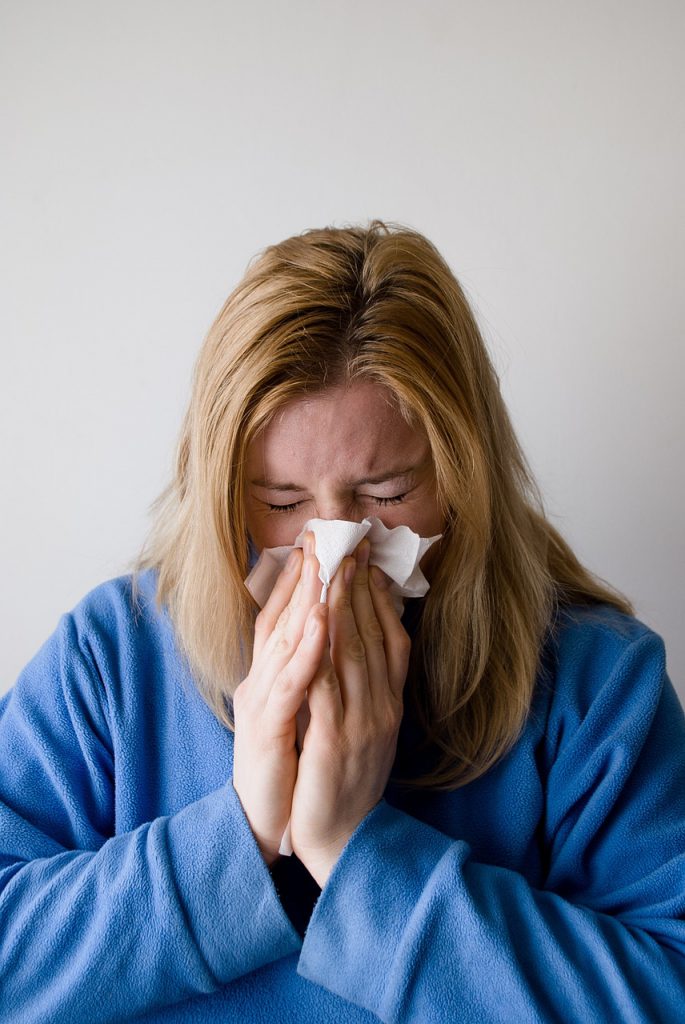I think it’s important to use natural preventative measures to deal with the H1N1 flu and the normal winter flu as well. This is especially important if you have decided not to vaccinate. And also helpful for keeping healthy if you have decided to do the vaccinations. Thanks to fellow hypnobirther and yoga mom, Sarah P. who shared this with me. Sarah received this information from her aunt who is a nurse.
Here’s to a healthy fall and winter for you and your family,
Hugs,
Marie
PS. My additions to the original document are in italics.
PPS. I have also posted a document written by Regina Naturopathic Doctor Julie Zepp about her take on H1N1. She is also a hypnobirthing and yoga mom.

*******************************************************
The only portals of entry are the nostrils and mouth/throat. In a global epidemic of this nature, it’s almost impossible to avoid coming into contact with H1N1 in spite of all precautions. Contact with H1N1 is not so much of a problem as proliferation is.
While you are still healthy and not showing any symptoms of H1N1 infection, in order to prevent proliferation, aggravation of symptoms and development of secondary infections, some very simple steps, not fully highlighted in most official communications, can be practiced (instead of focusing on how to stock N95 or Tamiflu):
1. Frequent hand-washing (well highlighted in all official communications).
2. “Hands-off-the-face” approach. Resist all temptations to touch any part of face (unless you want to eat, bathe). This is something which you can teach your children, although from experience it does take a while.
3. *Gargle twice a day with warm salt water (use Listerine if you don’t trust salt)… *H1N1 takes 2-3 days after initial infection in the throat/ nasal cavity to proliferate and show characteristic symptoms. Simple gargling prevents proliferation. In a way, gargling with salt water has the same effect on a healthy individual that Tamiflu has on an infected one. Don’t underestimate this simple, inexpensive and powerful preventative method.
4. Similar to 3 above, *clean your nostrils at least once every day with warm salt water. *Not everybody may be good at Jala Neti or Sutra Neti (very good Yoga asanas to clean nasal cavities), but *blowing the nose hard once a day and swabbing both nostrils with cotton buds dipped in warm salt water is very effective in bringing down viral population.* The other very good option is to clean the nasel passages once a day using salt water and a Neti Pot. Neti pots are little water pots that look like little Alladin’s lamps that you fill with warm salt water and pour in one side of your nose and the water runs out the other side. It sounds weird, but it is quite pleasant and VERY effective. You can watch a you tube video on how to do it here. http://www.youtube.com/watch?v=rsZeILCedRw
Neti Pots were featured on Oparah a little while ago, you can read about that segment here. http://www.oprah.com/slideshow/oprahshow/slideshow1_ss_oz_20070426/6
You can buy a neti pot at the yoga studio, or at any health food store. I LOVE my neti pot. I have been using mine for about 12 years and it’s always been helpful.
For kids, you can buy sterile saline (salt water) nasal mist which you release into their nostrils and it does the same thing as the neti pot.
5. *Boost your natural immunity with foods that are rich in Vitamin C (Amla and other citrus fruits). *If you have to supplement with Vitamin C tablets, make sure that it also has Zinc to boost absorption.
6. *Drink as much of warm liquids (tea, coffee, etc) as you can. *Drinking warm liquids has the same effect as gargling, but in the reverse direction. They wash off proliferating viruses from the throat into the stomach where they cannot survive, proliferate or do any harm.
Ps. The point of this post was not to cause a huge debate over the question of vaccination, but perhaps a frank discussion would be beneficial. Please see comments below.
For those of you who are pregnant, here is a link to the The Society of Obstetricians and Gynaecologists of Canada (SOGC) recommendations. Most of you will have seen this info at your doctor’s office.
www.sogc.org/h1n1/infopregnantwomen_e.asp
Excellent website (Public Health Agency of Canada) on H1N1 in pregnancy.
http://www.phac-aspc.gc.ca/alert-alerte/h1n1/fs-fi-pregnancy-grossesse-eng.php
*******************************************************
www.drzepp.com
Dr Julie Zepp Rutledge
H1N1 and the H1N1 vaccine: A Naturopathic Doctor’s Perspective
This past weekend I had the opportunity to take my daughter, now just under five months old, on a plane trip to visit some friends. At one point on the flight, one of the flight attendants asked me if I had or planned to have my infant daughter vaccinated against “the swine flu.” With 100% confidence I was able to say to her: “Not a chance!”
Saskatchewan health is planning to roll out the H1N1 vaccine to health care workers during the last week of October and to the public beginning the first week of November.
Hopefully this article reaches you before you have made the decision to go ahead and obtain a seasonal flu or H1N1 vaccine, and gives you the confidence to decline the recommended shot(s).
Swine influenza virus is caused by numerous subtypes of the Influenza A virus, namely H1N1 but also H1N2, H2N3, H3N1 and H3N2. It is critical to realize, despite the extreme media hype, that the swine flu is simply another flu – it is not unusually deadly and is no more deadly than “regular” influenza. In fact, to date, in Canada there have been 77 reported deaths from H1N1 and over 3000 from seasonal influenza this year.
Because it is a relative of the Spanish Flu (same influenza A subtype H1N1) that caused the 1918 epidemic, alarm has been raised. It is, however, extremely important to remember that since that time our sanitation and health care have improved, significantly reducing mortality from influenza viruses. In addition, most deaths caused by the 1918 flu were as a result of secondary infection from bacteria – which today could be treated with antibiotics, if necessary.
A tragic death apparently resulting from the swine flu is the case of a teenage old boy in Saskatchewan. However, as is the case with over 99% of all flu-related deaths, the actual cause of death is reported to have been bacterial pneumonia – a not uncommon complication arising, not just in H1N1 flu cases, but equally in seasonal flu. Opportunistic streptococcal bacteria take advantage of the person’s lowered immune system resulting from the individual response to the particular flu virus involved and create a secondary infection.
Symptoms of H1N1 are similar to those of regular human seasonal flu and include fever, cough, shortness of breath, sore throat, disorientation, chills and fatigue. Some people have reported stiffness of the joints, diarrhea and vomiting associated with swine flu.
In children emergency warning signs requiring urgent medical attention are extremely rare, but include:
* Fast breathing or trouble breathing
* Bluish skin color
* Not waking up or not interacting
In adults, emergency warning signs requiring urgent medical attention, also rare, include:
* Difficulty breathing or shortness of breath
* Pain or pressure in the chest or abdomen
* Sudden dizziness
* Confusion
* Severe or persistent vomiting
Spread of swine influenza A (H1N1) happens mainly from person-to-person in the same way that seasonal flu spreads i.e. through coughing or sneezing of people with influenza. Infected people may be able to infect others beginning 1 day before symptoms develop and up to 7 or more days after becoming sick.
The deputy chief medical health officer for our province, Dr Saqib Shahab, has been interviewed about H1N1 and has been quoted (Leader Post, Sept. 17, 2009) as saying: “If you have fever, cough, sore throat, stay at home. Don’t go out to do your groceries. Have a flu buddy, who can do your groceries, run chores for you, run errands for you. Stay at home until you’re better.” He also says that simple prevention measures remain a key strategy for limiting the potential impact of the H1N1 pandemic this flu season. Shahab said the advice is now for people to stay at home until symptoms wane, which for many people is only two to three days and that there’s a good chance people who get the flu this winter will have the pandemic variety, but they don’t need to be tested to confirm that.
This reinforces my lack of concern over the potential deadliness of the virus if we take good care of our health: stay home, rest, and look after ourselves. Given the benign nature of the disease, it seems silly to me to even consider vaccination though it is being recommended that we vaccinate “just in case”. It can’t do any harm, right? Just potentially good? I disagree.
We must take into consideration the drawbacks of vaccinations which are numerous. To name just a few:
1) Vaccinations have also been called immunizations. I hesitate to use this term, as vaccinations do not guarantee immunity from the virus being vaccinated against. Lifelong immunity is guaranteed only when the body has had to fight the virus off on its own, without the assistance of a vaccine. What has been seen repeatedly with vaccinations is that they do not, in fact, confer life long immunity against the disease against which you are being vaccinated; unlike when you actually contract the disease. For example, a child who might acquire chicken pox naturally has an immune system that is fully mobilized and after recovering from the illness will have lifelong immunity. If a child were to instead have the vaccine against chicken pox, they have a greater likelihood of developing the illness again later in life, as vaccine effects often wear off.
2) Most vaccinations have not undergone adequate testing before they are launched into the marketplace. One such example, which we all must be reminded of, especially right now, is the swine flu debacle of 1976. Over 30 years ago, the swine flu hit North America and the president at the time Gerald Ford was involved in a mandatory swine flu vaccine campaign that resulted in huge numbers of people becoming ill with Guillain-Barre syndrome – a syndrome characterized by paralysis that can potentially result in death. This program was halted after two months due to the adverse reactions to the vaccine (more people died as a result of the vaccine as did from the flu itself) and the swine flu did not become the epidemic that was predicted, even though the vaccination program was abolished.
3) Toxic adjuvant materials in vaccines will actually weaken the immune system. These include preservatives such as thimerosol, polysorbates, and aluminum in addition to allergenic proteins and antibiotics. You may be protected by the strain of flu virus in the shot however you are left at greater risk for infection from other viruses or bacteria. This is evidence in the report from this September indicating that those individuals who had a seasonal flu vaccine may be at greater risk for acquiring H1N1. The toxic materials have also been shown to increase a person’s risk for autoimmune
conditions.
4) Researchers are warning that over-use of the flu vaccine and anti-flu drugs like Tamiflu can apply genetic pressure on flu viruses and then they are more likely to mutate into a more deadly strain. Due to the rapidly changing nature of viruses getting the “shot” does not guarantee you will remain free of the flu as you are only protected against the strain that was in the vaccine.
5) Billions of dollars are spent on vaccination development and campaigns. It makes sense that we should learn from history that when a “fad” virus goes around, the chances of it developing into a pandemic in these times is virtually non-existent. I lived in Toronto at the time of the SARS outbreak. This was supposed to be a scary and deadly virus that turned out to be short lived and over-hyped. There were no mass vaccinations programs implemented, despite the efforts to create and distribute such a vaccine, and the disease petered out on its own. As health care and sanitation
have improved in the last 90 years (1918 Spanish Influenza), pandemic deaths resulting from viral diseases have dropped to zero, though we are still constantly being warned about being overdue for a deadly flu pandemic (something we were promised with ’76 swine flu, ’99 rotavirus, avian flu, ’04 SARS and now, once again, swine flu). Perhaps these billions of dollars would be better spent on improving health care and sanitation conditions in those areas of our country and those parts of the world where poor environment might actually lead to disease outbreaks, endemic spread and mortality.
In Saskatchewan alone the bill for the vaccination program is just over 12 million dollars: 40% that will be paid by our provincial health care system and 60% to be paid by the federal government. I am certain that we can all think of better ways that our health care dollarscould be utilized.
An interesting video to watch for another physician’s perspective on the swine flu vaccination can be found at: http://www.youtube.com/watch?v=WJoCDqVXgRI. Dr Kent Holtorf, Infectious Disease Specialist, speaks out against the swine flu vaccine.
As always, when dealing with viruses, it is so important to remember that the best defence is a good offence. Fortifying your immune system is the most important and vital think you can do to protect yourself from whatever flu might be “going around”.
Practicing good hygiene: hand washing with warm soapy water, covering nose and mouth with a tissue when coughing or sneezing and throwing the tissue in the trash after using it or coughing or sneezing into sleeve or jacket of bent arm rather than into closed fist or open hand and avoiding touching your eyes, nose or mouth are all great preventative measures. Where possible, avoid close contact with sick people especially if you are feeling run down or tired yourself as this is an indication that your immune system is run down and you will be more susceptible to viruses and bacteria.
Certain supplements can be taken to assist with immune system boosting, especially by those who have a higher risk of exposure: children in daycares, health care workers, elderly in nursing homes and teachers.
A sample protocol that I might suggest to a patient (adult) would include:
– Vitamin A 10,000 IU daily as an anti-viral (not for pregnant women)
– Vitamin C 2000 mg daily
– Vitamin D 2000 IU daily
– Zinc 15 mg daily
– Acidophilus and bifidus (aka probiotic) supplement daily
– Reishi mushroom 300 mg daily as an immune system booster
– Mucoccocinum (a homeopathic “flu shot”) one tablet weekly during flu season¨
And for children (ages 2-12):
– Vitamin C 250-500 mg daily
– Vitamin D 400-800 IU daily
– Zinc 5 mg daily (as a zinc losange; not for children under 5)
– Elderberry, Reishi and Astragalus combination 1-2 tablets daily
– Mucoccocinum half to one tablet weekly (see note at end)
These supplements are ideally in addition to a wholesome whole foods diet of organic fruits and vegetables, whole grains, nuts and seeds (raw) and high quality organic meats and eggs. It is important to limit dairy, and to avoid non-organic dairy altogether, as excessive intake can increase mucous production and trap viruses in the mucous membranes of the nose, throat and lungs. Avoid sugar as sugar will encourage pathogen growth. Be sure to get plenty of rest, fresh air and exercise.
What do I do, given I have chosen not to have my daughter (or myself) vaccinated against the seasonal and swine flus? Keep my own system as healthy as possible by eating organic foods, avoiding toxin exposure (in foods, cleaning products, personal care products), drinking clean water, exercising, getting enough rest and sleep and taking a high quality
multivitamin, toxin free fish oil, vitamin D and greens supplements daily. When I have been feeling overtired, have come into contact with someone who has any viral symptoms or have been traveling on an airplane I ensure I take immune system supplements such as Reishi mushroom, Astragalus, or Echinacea to help increase the important immunoglobulins (antibodies) that I pass to my daughter through immune fortifying breast milk.
And in so doing we can breathe easy knowing that when we are exposed to any virus – be it H1N1 or any of the other Influenza A strains that we know as the “seasonal flu” – that our bodies are strong and will be able to mount the appropriate and suitable response, leaving us
healthy and strong.
Dr. Julie Zepp
I don’t recommend these as a rule, as I believe the body is capable of fending for itself, given the right support. However for those who do feel they want or need extra protection or are particularly compromised, the use of homeopathic flu preparations can be very beneficial.





3 thoughts on “H1N1 Flu Precaution”
Thanks you so much, Marie! I haven’t read about any of these helpful tips (other than handwashing) anywhere. I’m going to start them all with my family today. I feel empowered knowing that I can help my family to potentially avoid serious illness.
On a side note, my neti pot was purchased at Shoppers Drug Mart.
Thanks again!
Hi Marie – I usually love your newsletters, and of course I always love to receive information that makes me contemplate issues, but I had to share some thoughts about the information provided in latest version – I think we need to carefully look at all the information available regarding the H1N1 virus and think critically about the consequences to both our children and others. Having said that, I understand it is a big decision and many people will chose not to immunize. Although the advise from Dr. Oz (which is where that originated by the way) is good but at the same time the reality is that people are dying from H1N1 that would not typically have died from the flu.. two healthy young teenagers have just died from flu-like in Ontario this week.
I still have not decided whether I will immunize myself or the kids, but I am thinking carefully and critically about this one as the ramifications are very serious. There is ample evidence that people are biased to always looking for and believing the information presented to us that align with our beliefs, so I think it’s more important to be aware of this bias and critically review information that counters our own philosophy. Just some thoughts…
This article considers the potential strain on the health care system.
http://www.theglobeandmail.com/news/opinions/refusing-to-get-vaccinated-is-selfish/article1339120/
Have a good day,
Nathalie
Hey Nathalie,
You make some really good points. I’m going to post your comment to the blog comments because I think your point of view is really valid. Especially the part about being biased to information that aligns with our beliefs. Totally true for me. For myself, the information that I received about H1N1 suggested that it would be fatal to those with poor health or compromised immune systems, but not fatal for those who are healthy. And it was upon that information that I based my decision. However if that information is wrong, then I will need to re-evaluate the vaccination question.
I also really enjoy reading the globe and mail’s article. I had never considered the impact my personal decision on the health care system as a whole.
Marie
I actually like to focus on bumping up my immune system over fall and winter instead of relying on traditional medicine and flu shots which have questionable efficacy anyway. I increase my intake of probiotics to flood my internal system with good bacteria, leaving less room for bad bacteria and bacterial infections and amping up my body’s power to handle viral infections. Just MHO. This is a blog on the probiotic blend that I use: http://www.chrisbyrnes.com/2011/09/23/probiotics-this-fall-for-good-immune-health/